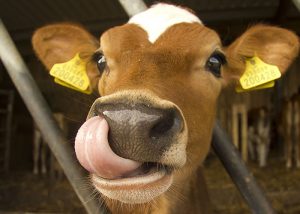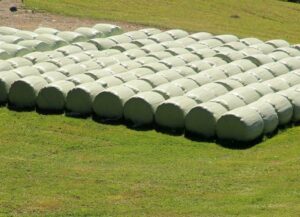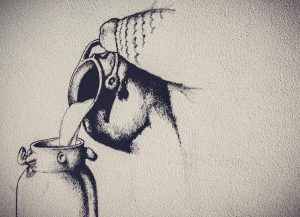Fernando Díaz
Faba beans (Vicia faba) is a grain legume that may be considered as dual-purpose feed for protein and starch contents. Due to its high protein (28 – 32% dry matter; DM) and starch contents (40% DM), faba beans can replace both protein meals and cereal grains in dairy cow diets.
When compared with soybean meal, the protein in faba beans is more ruminally degradable, richer in lysine and lower in sulfur amino acids methionine and cysteine. Faba beans contain anti-nutritional factors that can have negative effects on cow performance, including tannins, trypsin inhibitors, protease inhibitors, lectins, gallic acid and phytoestrogen compounds. Therefore, applying heat-based processing treatments to faba beans is recommended to reduce the effects of anti-nutritional factors and to increase its undegradable protein fraction.
A recent study conducted at the Agri-Food and Biosciences Institute, Hillsborough, Northern Ireland, examined the impact of feeding faba beans on performance and nutrient digestibility of mid-lactation dairy cows. The cows were given ad libitum access to perennial ryegrass silage and were supplemented with 10.0 kg of four different concentrates offered via feeding stations.
The concentrates contained incremental levels of faba beans: 0, 17, 33 or 47% of DM, with the faba beans partially replacing soybean meal, rapeseed meal, corn gluten feed, wheat and ground corn. The grass silage was average quality (14.4% protein, 52% NDF in a DM basis), and the concentrates were formulated to be isonitrogenous (21.7% protein) and to have similar starch contents (30 – 32%). The beans fed in this study were variety Fuego, spring sown, harvested on 15th September 2015, and dried for approximately 2 h at 80 °C to achieve 87% DM content.
The findings of this work were published in Livestock Science. The researchers (Johnston et al., 2019) reported faba beans inclusion in the concentrates had no effect on either intake (12.9, 8.8 and 21.7 kg DM/day for silage, concentrate, and total intake, respectively) or production performance. Cows produced daily 28.1 kg of milk, 1.2 kg of milk fat, and 0.96 kg of milk protein. As expected, plasma urea increased linearly with increasing faba beans inclusion level from 2.97 mmol/L in the concentrate with no beans to 3.42 mmol/L in the concentrate with the highest inclusion rate (47% DM). Moreover, digestibility coefficients for DM, organic matter, gross energy, and fiber were not affected by faba beans inclusion; however, there was a linear increase in nitrogen digestibility with increasing levels of faba beans.
In conclusion, the results of this study indicate that faba beans can be included in mid-lactation diets at high inclusion rate (up to 4.7 kg/cow per day) and partially replace other protein and starch sources. It is important to mention that protein content in these diets was relatively high (17.4% DM) and milk production was relatively low, the results may differ when faba beans are included in low-protein diets or fed to high-producing cows.
Reference
D.J. Johnston, K. Theodoridou, C.P. Ferris. 2019. The impact of field bean inclusion level in dairy cow diets on cow performance and nutrient utilisation. Livestock Science. 220: 166-172.












